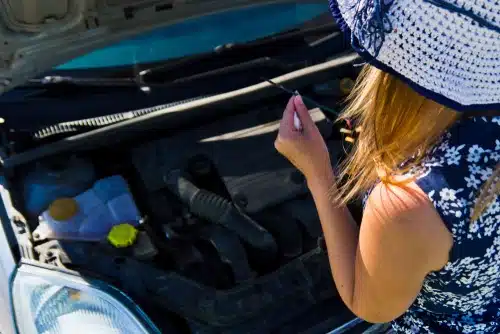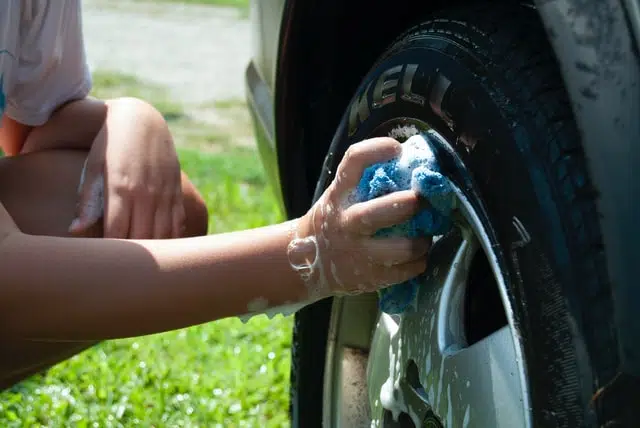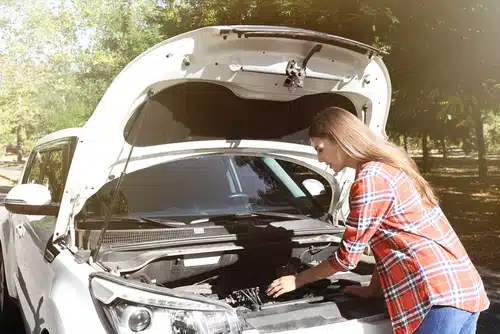Home » Blog » Car » Car Health & Safety » 6 Car Maintenance Tips You Should Know (But Don’t??)
Categories
Tags
animal welfare
breed profile
buying a car
buying a pet
Car
car accessories
car care
car features
car insurance
Car safety
car sales
car service
cat
cat behaviour
cat body language
Cat Breeds
cat food
cat insurance
comprehensive car insurance
Dog
Dog Behaviour
dog body language
Dog Breeds
dog food
Dog Insurance
dog training
eco friendly cars
Kitten
New Car
pet accessories
pet activities
Pet Adoption
pet breeders
pet days of the year
pet fun stuff
Pet Health
pet insurance
pet parenting
Pet Safety
pet services
Puppy
rescue pets
road safety
road trip
safe driving
Recent Blog:
Facebook Posts
12 hours ago
Are intestinal worms setting up camp in your dog’s gut without paying rent? Here’s how to spot the main culprits and get rid of them too:![]()
![]() Preventing, Identifying and Treating Intestinal Worms in Dogs - bit.ly/43YjCKu
... See MoreSee Less
Preventing, Identifying and Treating Intestinal Worms in Dogs - bit.ly/43YjCKu
... See MoreSee Less
Preventing, Identifying and Treating Intestinal Worms in Dogs
www.pd.com.au
Intestinal worms, such as roundworms in dogs are one of the least glamorous topics on the planet. These intestinal parasites that basically use our dogs
PD Insurance
with Dogs West.
2 days ago
We enjoyed meeting #breeders #doglovers and members at the Dogs West Open Day. Special thanks to our partner Dogs West for organising an incredible event. There is still time to enter our pawsome competition. Click here for details: bit.ly/4covyce![]() #PDinsurance #dogswestopenday #dogswest
... See MoreSee Less
#PDinsurance #dogswestopenday #dogswest
... See MoreSee Less
3 days ago
Did you know? The Manx is a breed that is known for its lack of a tail, which is caused by a genetic mutation.
... See MoreSee Less
New data shows a surprisingly high proportion of Australians lack basic knowledge on how to care for their car. Side-eyeing right now? Don’t worry, we’ve got your back. Here are six simple tips to get your head around basic car maintenance.
Australian motoring knowledge – a lot to learn!
It’s no secret Australians love their cars. Our continent is huge, after all, and some would say our public transport system is hardly world leading.
There are currently 19.8 million registered cars in Australia, according to the Australian Bureau of Statistics (ABS). For a country of 25 million people, it’s clear most Aussies rely on their trusty vehicles. But do we know how to care for them?
According to new research, no.
A survey PD Insurance conducted recently showed many Australians are in serious need of a crash course in car maintenance. Even basic tasks are bewildering to many of us.
Car maintenance know-how: what the numbers say
Starting from the ground up, only 70% of Australians know how to put air in their tyres, while a mere 58% can change a tyre. And while females’ knowledge combined was lower, males have plenty of room for improvement too. Sorry fellas, you’re not off the hook…
When it comes to fluids, we continue to be a bit dense. While only half of us have mastered the art of topping up our windscreen wiper fluid, most – but not all – of us know how to put fuel in our cars.
Let’s just take a moment while that last factoid sinks in.
Only 82% of the 1,000 Australians we surveyed reported knowing how to fill up their fuel tank. Seriously. And that number plummeted to an eye-wateringly low 65% for people aged 28-34. Flabbergasted? Us too!
So, are you on the wrong side of the numbers? Don’t worry, we won’t tell anyone. Here’s a handful of basic car maintenance tips to get you up to speed.
How to master basic car maintenance
Basic car maintenance has significant benefits for your vehicle, your safety and your wallet. Not to mention the environment.
And because the average Australian car is 10.4 years old (according to ABS data), maintenance skills are even more important. Older cars require more regular upkeep to keep them in tip-top condition.
Here are six simple ways to look after your car.
Monitor your tyres
Most of us know tyres are dangerous when they’re old and worn out, but did you know they’re also dangerous with the wrong car tyre pressure? The correct tyre pressure allows your car to effectively accelerate, corner, brake and grip the road.
It also enables your car to run more efficiently, so you’ll spend less on fuel. Didn’t realise this? You’re not alone – 29% of those we surveyed didn’t either.
Optimum tyre pressure varies depending on the make and model of your car. You can find the specifics for your car on the manufacturer’s information plate, usually located inside the driver’s door panel. It’ll also be in your owner’s manual.
Experts recommend you check your tyre pressure every two to three weeks.

Do it when your tyres are cold, before you hit the highway
- Check the pressure of your spare tyre while you’re at it
- Having a car full of people or gear will impact optimum pressure – check the manufacturer info plate
It’s also vital to change your tyres regularly. You’ll know it’s well time for a new set when the tread indicator (located in the grooves of the tyre) are worn flush with the tyre’s tread. On average, this is every 40,000km, or every two to three years.
Tyres also damage with age, becoming brittle and dangerous. If your tyres are six or more years old, it’s time for a new set.
Not sure how to find a balance between new tyre quality and cost? Here’s a great article.
Check and change your engine oil
Back when you were a newbie driver, one or both of your parents probably droned on about the importance of checking your engine oil. You know what? They were right. Monitoring your oil is one of the simplest and most important ways to care for your car.
Engine oil is vital to the smooth running of any vehicle. It lubricates the engine’s moving parts, reducing friction to prevent damage and help keep the car cool.
It’s important work, and dirty oil simply isn’t up to the task. Over time, grime builds up in engine oil, making the job of lubrication a lot more difficult. This can lead to serious and expensive engine damage.
Engine oil should be changed whenever your car is serviced, every 5,000 to 10,000km, or every six to 12 months. In between services, be sure to check and top up your engine oil regularly.
Basic car maintenance tips for checking engine oil:
- Check your car’s oil weekly
- Do it when the engine is cold and the car is parked on level ground
- Your vehicle owner’s manual will tell you the best type of oil for your car
And luckily, we’ve also got you covered with a comprehensive guide on how to check your oil.
Change your windscreen wiper blades and fill wiper fluid
It comes as no surprise that one of the most vital aspects of safe driving is the ability to see. Worn out windscreen wiper blades are not effective at clearing the windscreen, which impedes visibility and puts you and other road users at risk.
New wiper blades are inexpensive and automotive stores will let you know exactly which ones you need. They’ll usually even install them for you, if you’re one of the 52% of Aussies who don’t know how. No more excuses!
It’s equally important to keep your wiper fluid topped up. The filler point is beneath the bonnet, marked with a windscreen wiper symbol. You can buy specialised fluid, but plain water is much better than nothing. This step-by-step guide might help.

Tips for windscreen wiper maintenance:
- Plain water with a squirt of dishwashing liquid makes an effective and cheap wiper fluid
- Change your wiper blades every six months
- Keep your windscreen clean so the blades last longer – dirt causes damage
And what should you do if your windscreen is chipped or cracked? Replace it! Here’s why windscreen damage is more important than you might think.
Check your lights are in working order
Having a working set of lights is vital for safe driving and accident avoidance. There’s a fair chance you’ll notice if your headlights aren’t working when you drive at night, but when was the last time you checked each indicator and reversing light?
Most modern cars will alert you if a bulb needs replacing, but older cars might not. Either way, it’s a smart idea to conduct a monthly check of each of your car’s lights. We’re talking headlights and high beams, front and back indicators, reversing lights, and front fog lights.
Do you tow a boat or caravan? Check your trailer lights are in working order before each and every outing.
If there’s a warning light on your dash telling you a bulb is out, don’t ignore it. They’re usually quick and inexpensive to change and are vital for road safety.
Basic car maintenance tips for car lights
- Clean headlights with a soft cloth each week so they shine clear and bright
- Change bulbs in pairs – once one goes, the other won’t be far off
- For yellow or cloudy headlights on older cars, grab a DIY headlight restoration kit from an automotive store
Keep your car clean
At the risk of sounding like your grade nine PE teacher, please, keep it clean!
Regularly washing your car is important not only to maintain its great looks, but also to improve the lifespan of the vehicle. The swift removal of dirt, impurities, squashed bugs and tree sap helps prevent paint corrosion, which otherwise leads to water ingress and eventually, rust.
And when you live on the coast, as many beach-loving Aussies do, this process happens even more quickly. Yet we found only 24% of Australians know how to protect their car from salty ocean air.
If this sounds familiar, read our article on how to protect your car from salt and sun damage. Chuck on the boardies and the tunes ‘coz it’s time to get sudsy!
It’s also a good idea to pop the bonnet and check the engine bay regularly, removing any leaves and dirt that’ve built up. This protects your engine and electronic components from moisture, dirt ingress and, ultimately, rust.

Basic car maintenance tips for keeping your car clean:
- Avoid parking under trees to prevent leaves, tree sap and animal droppings from falling on your car
- Remove any build-up ASAP to prevent paint damage
- Wash your car more regularly if you live on the coast
As you can see, you don’t have to be a mechanical whiz to master the basics of car maintenance. By following these simple steps, you can help yourself avoid more serious issues down the track.
And speaking of serious issues, you’ll want to be covered by car insurance in case you have an accident or badly damage your car. Before you put your new car maintenance tips knowledge to good use, take a couple of minutes to get an online quote with us.
Share On:




